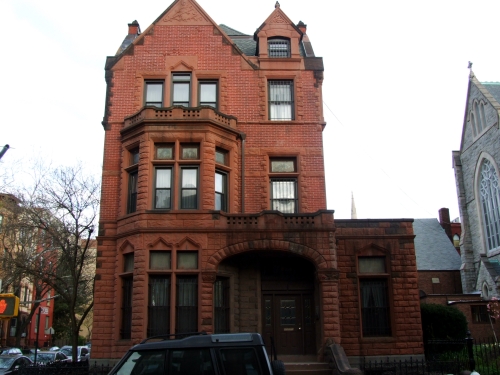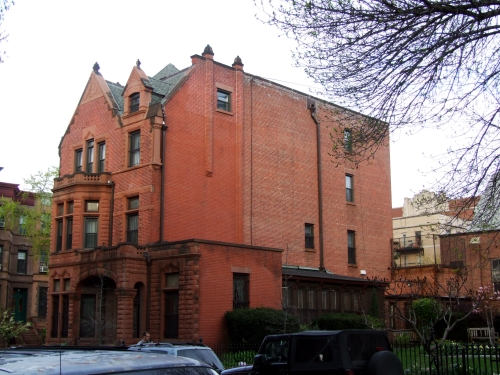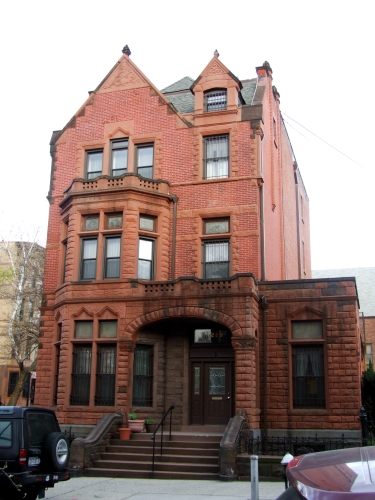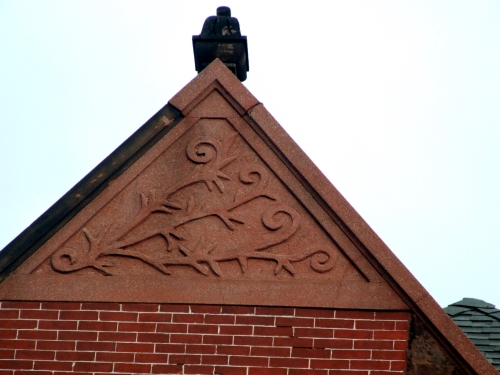Building of the Day: 225 Sixth Avenue
Brooklyn, one building at a time. Name: St. Francis Xavier Rectory Address: 225 Sixth Avenue Cross Streets: Corner President Street Neighborhood: Park Slope Year Built: 1889 Architectural Style: Queen Anne Architect: Charles Werner Other works by architect: Buildings in Park Slope, Fort Greene, Prospect Park South and Prospect Heights. 208 Argyle Rd; 214 Lincoln Pl;…

Brooklyn, one building at a time.
Name: St. Francis Xavier Rectory
Address: 225 Sixth Avenue
Cross Streets: Corner President Street
Neighborhood: Park Slope
Year Built: 1889
Architectural Style: Queen Anne
Architect: Charles Werner
Other works by architect: Buildings in Park Slope, Fort Greene, Prospect Park South and Prospect Heights. 208 Argyle Rd; 214 Lincoln Pl; 26-30 South Oxford.
Landmarked: No, and neither is the church, astonishingly enough.
The story: The parish of St. Francis Xavier Catholic Church was established in 1886, at 243 6th Avenue, in a brownstone on the corner of Carroll Street and 6th. Thanks to a growing Irish Catholic population and a go-getter founding priest, Fr. David Hickey, a church was standing on the site of the present St. Francis Xavier only four months later. That building was soon too small, and it was moved to President Street, and the beautiful granite and limestone Gothic church designed by Thomas Houghton was begun in 1900, and was dedicated in 1904. Like many successful and large Catholic churches, the church building itself was soon surrounded by a compound of buildings, including a school, convent, parish center and rectory. This building is the church rectory.
It was actually begun before the church went into construction, and was built in 1889, while the new church was not even yet in the planning stages. That explains why the style and building materials of the rectory and church are so dissimilar. Houghton’s other truly majestic church, Our Lady of Victory in Stuyvesant Heights, had been built by then, and its rectory , also next door to the church, is made of the same material as the church, and in a similar style. But Houghton didn’t have anything to do with this building.
The rectory was designed by Charles Werner, a Brooklyn architect with offices at 26 Court Street. He was a well-respected architect with buildings in Manhattan and Brooklyn, with most of his business here in Brooklyn. He did a bit of everything, but most of his listings in Brooklyn are for rowhouses, single family houses, and small industrial buildings. He’s on record with brownstones on South Oxford Street and Lincoln Place, and a bakery not far from here, on President and 3rd Avenue. In the 20th century, he would design Colonial Revivals in Prospect Park South. He had a long career, from the 1880s until at least 1915 or so.
St. Francis Xavier’s rectory cost $12,000, according to the records, and is a very comfortable 26-foot by 60-foot building. It’s made of brownstone and brick, and fits in very well with the surrounding homes, looking like an upscale mansion a bit away from the streets where a house of this size and materials would be quite ordinary. Perhaps for this congregation of Irish Catholics, many of whom had done pretty well, this was a show that they, though the home of their beloved parish priest, had arrived.
As pure Queen Anne residential architecture, it’s a nice building, more noticeable for its size and for standing alone on this large lot, rather than for its design. Werner was a capable designer, certainly not one of the superstars of his day. Thomas Houghton’s church is magnificent, probably one of the few things that could make you hardly notice this large mansion next door. And really, that’s how it should be. GMAP








this building has made quite a few appearances in boardwalk empire.